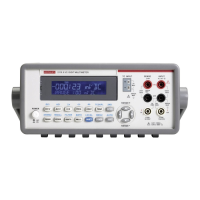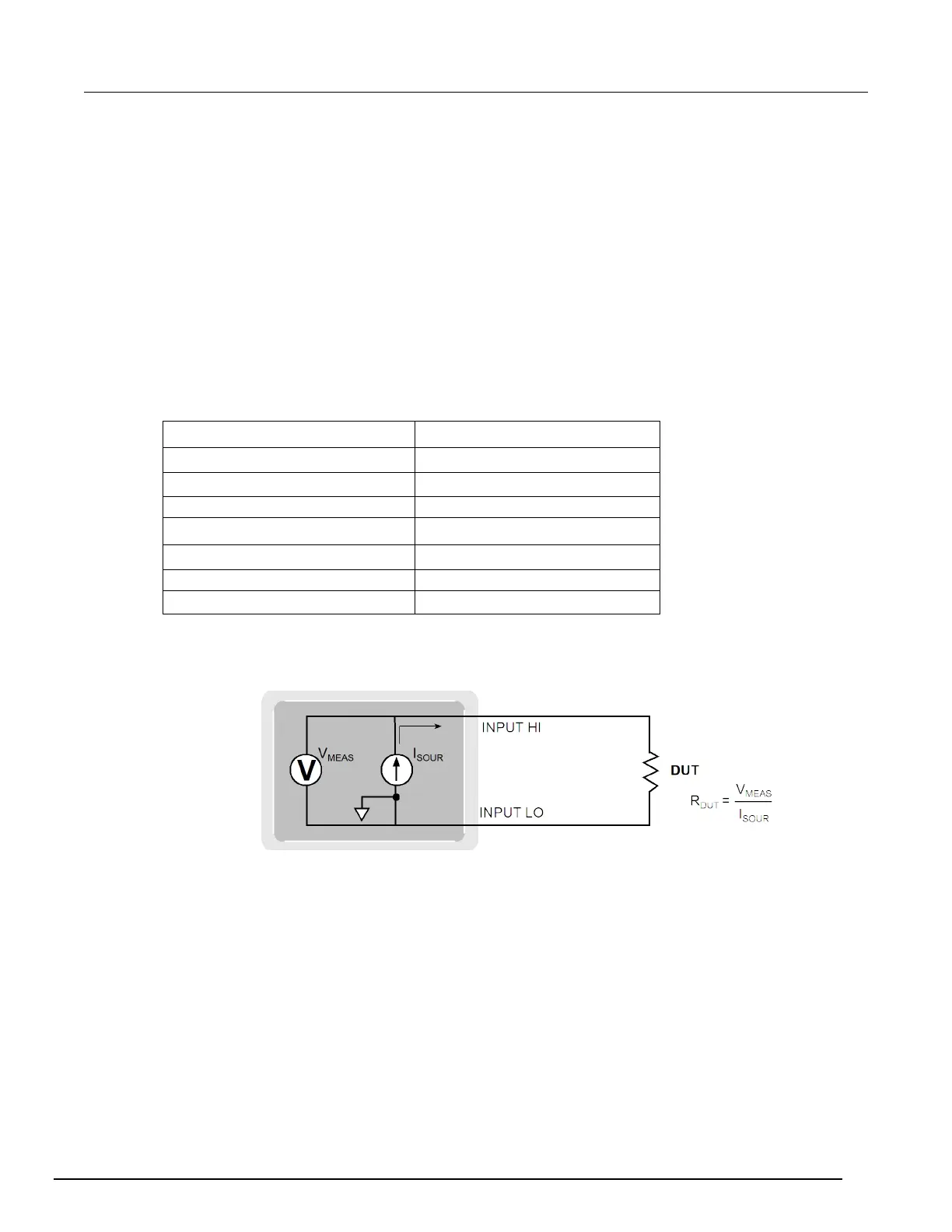5½ Digit Multimeter Reference Manual Section 4:
2110-901-01 Rev. C/August 2013 4-3
DMM resistance measurement methods
The Model 2110 uses the constant-current method to measure resistance. The constant-current
method sources a constant current (I
SOUR
) to the device under test (DUT) and measures the voltage
(V
MEAS
). Resistance (R
DUT
) is then calculated and displayed using the known current and measured
voltage (R
DUT
= V
MEAS
/I
SOUR
).
The constant-current method is shown below. The test current sourced to the DUT depends on the
selected measurement range. For example, for the 100 Ω range, the test current is 1 mA. Because
the voltmeter of the Model 2110 has very high input impedance, virtually all the test current (1 mA)
flows through the DUT. For DUT ≤1 kΩ, 4-wire ohms measurements should be used as shown.
Because the voltage is measured at the DUT, voltage drop in the test leads is eliminated (this voltage
could be significant when measuring low-ohm DUT).
Resistance measurement range Test current
100 Ω
1 mA
1 KΩ
1 mA
Ω
100 KΩ
10 μA
1 MΩ
1 μA
Ω
100 MΩ
0.1 μA
The 2-wire constant-current method is shown below.
Figure 36: Two-wire constant-current source method
The 4-wire constant-current method is shown below.

